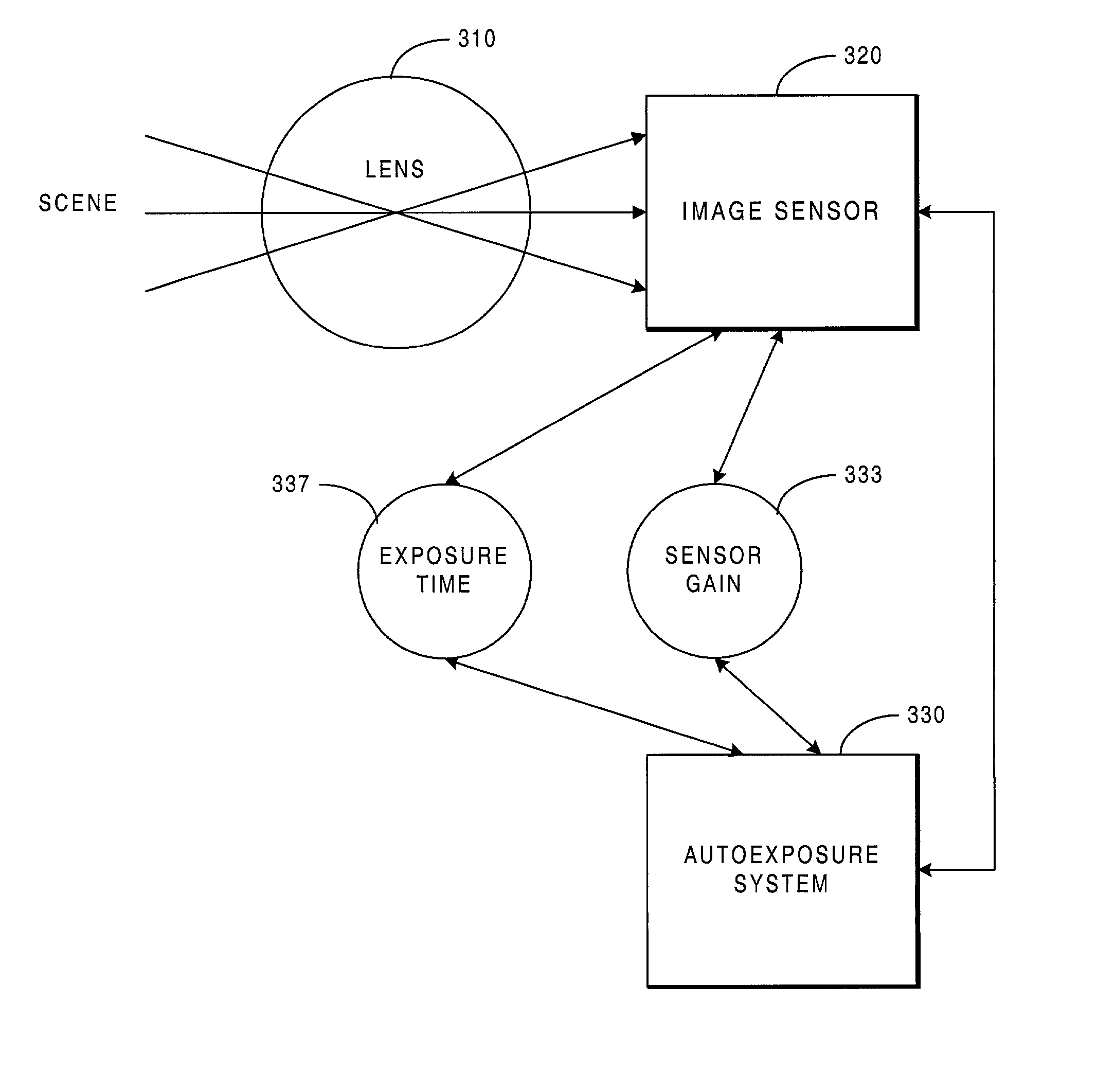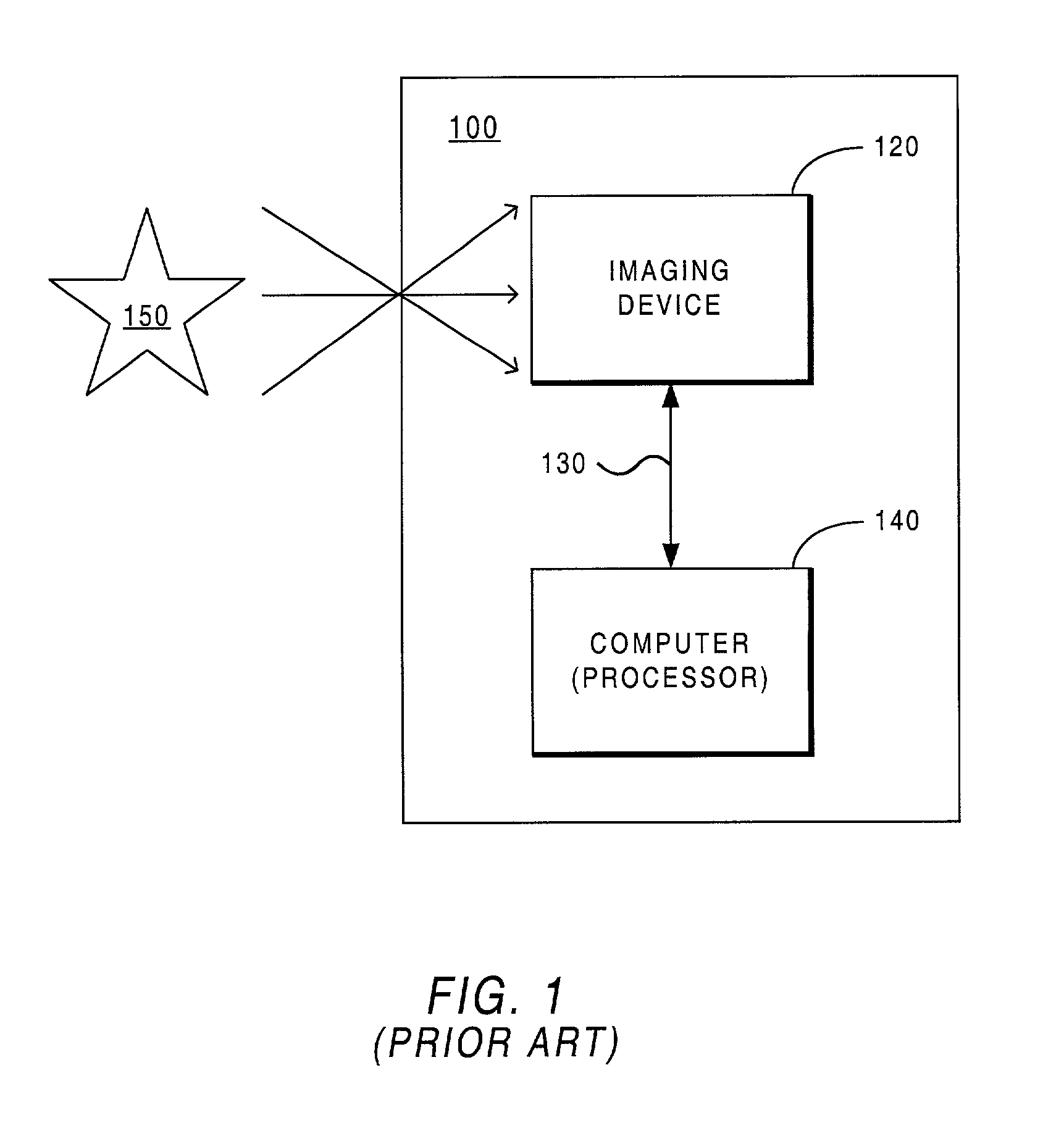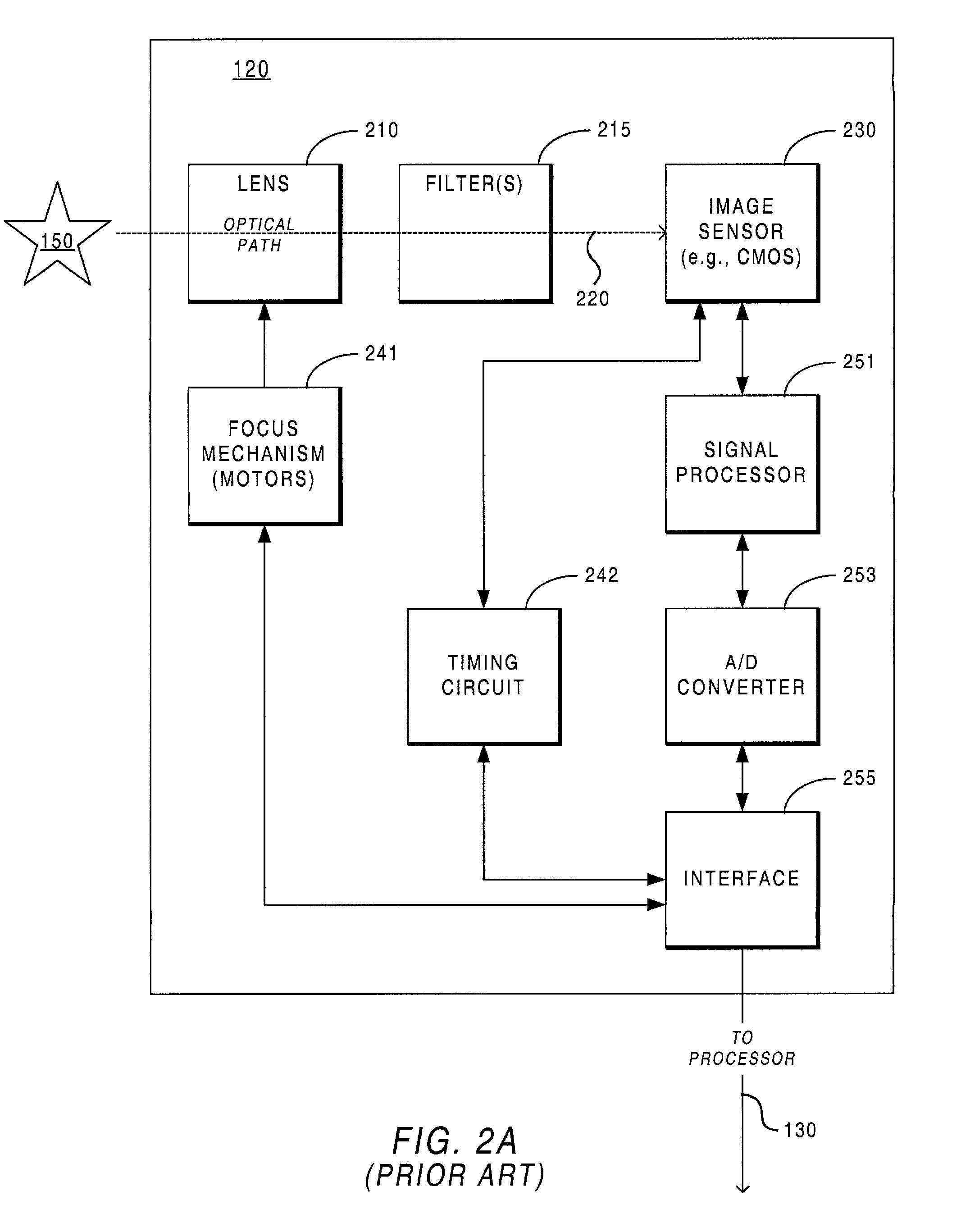Autoexposure methodology in a digital camera
a digital camera and autoexposure technology, applied in the field of digital image processing, can solve the problems of underexposure, lack of details, overexposure of photographs,
- Summary
- Abstract
- Description
- Claims
- Application Information
AI Technical Summary
Benefits of technology
Problems solved by technology
Method used
Image
Examples
Embodiment Construction
[0033] The following description will focus on the currently-preferred embodiment of the present invention, which is implemented in a digital camera. The present invention is not, however, limited to any one particular application or any particular environment. Instead, those skilled in the art will find that the system and methods of the present invention may be advantageously employed on a variety of different devices. Therefore, the description of the exemplary embodiment that follows is for purpose of illustration and not limitation.
[0034] I. Digital Camera-based Implementation
[0035] A. Basic Components of Digital Camera
[0036] The present invention may be implemented on a media capturing and recording system, such as a digital camera. FIG. 1 is a very general block diagram of a digital camera 100 suitable for implementing the present invention. As shown, the digital camera 100 comprises an imaging device 120, a system bus 130, and a processor or computer 140 (e.g., microprocesso...
PUM
 Login to View More
Login to View More Abstract
Description
Claims
Application Information
 Login to View More
Login to View More - R&D
- Intellectual Property
- Life Sciences
- Materials
- Tech Scout
- Unparalleled Data Quality
- Higher Quality Content
- 60% Fewer Hallucinations
Browse by: Latest US Patents, China's latest patents, Technical Efficacy Thesaurus, Application Domain, Technology Topic, Popular Technical Reports.
© 2025 PatSnap. All rights reserved.Legal|Privacy policy|Modern Slavery Act Transparency Statement|Sitemap|About US| Contact US: help@patsnap.com



